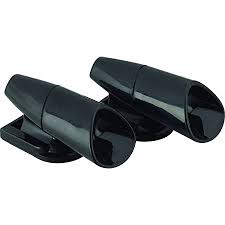JULY 18, 2021 – Deer are a danger. They feast on gardens and new pine shoots, and they’re all too eager to ambush motorists traveling on country roads.
Deer total cars, and we see plenty of deer totaled by cars when we drive to the Red Cabin in northwest Wisconsin. One-mile stretch of highway is so full of deer, we call it “Deer Alley.” Along that portion of the trip, especially at dusk, deer spring forth from nowhere. Often I’ve had to honk, swerve, or brake to avoid smacking into a “forest cow.”
After a close encounter in descending darkness, the occasional mailbox, isolated shrubs and trees—everything—looks like a deer. And you slow down. Recently, when one of our sons talked about passing slow drivers along “Deer Alley,” I played my dad role and said, “Unless someone is doing 35 on a tractor, there’s never a need to pass someone along there. If you’re willing to trade safety for an extra three minutes, it’s time to revise your playlist. Only in the Valley of the Bison [a one-mile stretch of flat roadway along an isolated farm on which bison used to be raised] is it safe to pass.
“Besides,” I added emphatically, “you never know when a deer is going to leap out in front of you while you’re passing.”
My family has heard my “physics and driving safety” lecture repeatedly. The fact they roll their eyes doesn’t change . . . the fact that hitting a deer at 70 has a much worse outcome than hitting a deer at 55. Moreover, the slower your speed, the more likely you’ll (a) see the deer in the first place; and (b) avert adverse contact.
Years ago, “deer whistles” were a popular item at the checkout counter in convenience stores in the small towns along our route. These deer deflectors were billed as the sure-fire way to allow carefree driving. They were small, plastic devices mounted on a square half the size of a postage stamp with a super-strong adhesive on the bottom. The directions told you to stick one on each side of your front bumper.
As P.T. Barnum said, “There’s a sucker born every minute.” Surely that was the motivation behind development of the plastic devices that probably cost 10 cents, all-in, to get from factory to store counter—and around 10 bucks for you, the sucker, to own. According to the advertising, the deer whistles emitted a “high, screeching sound” that scared the daylights—but especially the dusklights—out of the deer. Thanks to the whistles’ “unique design,” however, the awful sound they allegedly produced was too high to be audible to the human ear.
The (other) catch was that to be effective, deer whistles had to be positioned “perfectly straight ahead” to be effective. But how would you know, given that their “unique design” produced an inaudible sound, even when “perfectly straight ahead”?
Striking a raccoon didn’t prove anything one way or the other. Lottery tickets replacing deer whistles at the checkout counter did.
(Remember to subscribe to this blog and receive notifications of new posts by email.)
© 2021 by Eric Nilsson
